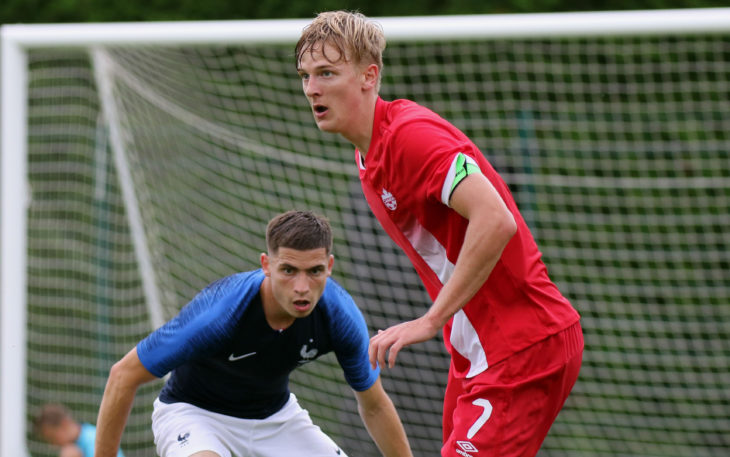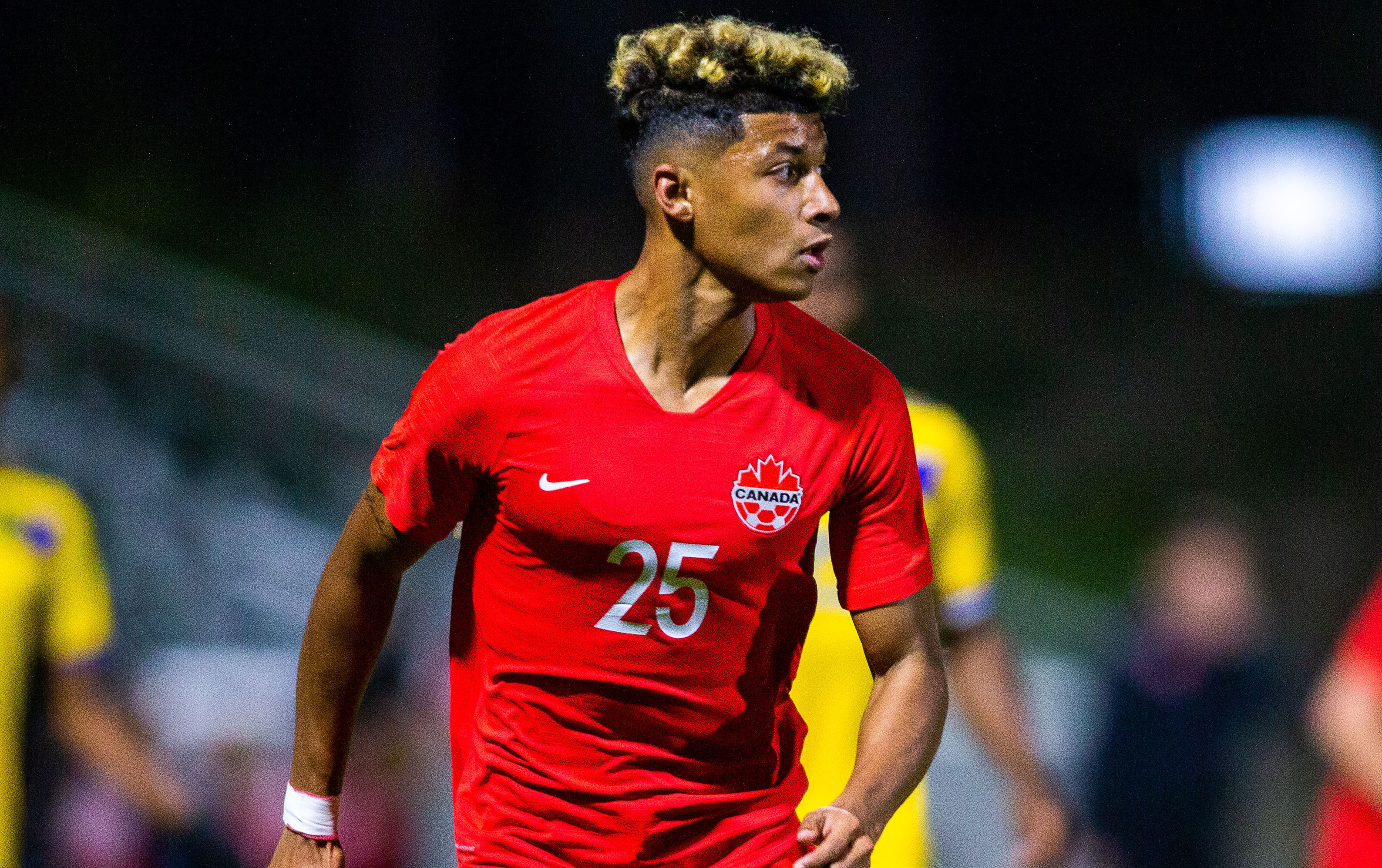Almost exactly a year after its original kickoff date, the Concacaf Men’s Olympic Qualifying tournament gets underway this week as eight under-23 national teams from the region prepare to do battle for just two places at this summer’s Olympic Games in Tokyo.
One of those eight teams is, of course, Canada, and this might be their most hotly anticipated Olympic qualifying campaign in years. The Canadian under-23 player pool is deeper than ever, with talented youngsters making themselves known around the globe (as well as, for the first time, here at home in the Canadian Premier League). This year’s team, coached by senior team assistant Mauro Biello, has some exciting talent in every position.
Canada has travelled down to Guadalajara, Mexico, where the tournament will take place, with games to be played at the cavernous Estadio Jalisco and Estadio Akron.
Even with some of Canada’s most notable players unavailable for various reasons (either the COVID-19 pandemic, or being too important to their club team, or both), this feels like one of the best chances the country has had at qualifying for the Olympics since their only appearance, the 1984 Games in Los Angeles. At the last Olympic qualifiers in 2015, Canada finished second in Group A, but lost to Mexico in the semifinals.
CanPL.ca will be along for every step of the way in this qualifying campaign, with in-depth coverage throughout.
The road to Tokyo: How can Canada qualify?

So, what has to happen for Canada to be at the Olympics this summer? Only two spots are up for grabs, with one handed to each of the tournament’s two finalists.
The Concacaf tournament is split into two groups of four, with the Canadians in Group B. They had the reasonably good fortune of a draw that kept Mexico, the United States, and a strong Costa Rican side together in Group A, but the teams in Canada’s way will not be pushovers.
In the group stage, Canada will take on El Salvador (March 19 at 6 p.m. ET), Haiti (March 22 at 6 p.m. ET), and Honduras (March 25 at 10 p.m. ET) — all matches to be broadcast on OneSoccer. The top two teams from the group will advance to a semifinal round, where Group B’s winner will play the second-placed side from Group A (and vice versa). Winners of the semifinals will go to Tokyo.
In a nutshell, Canada has to finish top two in their group, and then win an all-or-nothing knockout game, likely against either Mexico or the United States, in order to qualify for the Olympics. Simple, right?
If that’s not enough, the teams in Group B might be tougher than you’d think. Let’s take a quick look at Canada’s three group stage opponents.
El Salvador
Canada kicks off against a tough challenger. The Salvadorans have mostly drawn on players from local top-flight clubs, none of whom have a wealth of experience yet, but there are a few players to look keep tabs on. Forward Joshua Pérez, who just switched to El Salvador after playing for the American youth national teams since 2014, has been playing in the Spanish third tier with UD Ibiza. He played one game in Italy’s Serie A for Fiorentina a few years ago, and he also made 15 appearances in MLS for Los Angeles FC. Pérez’s uncle, former U.S. national team stalwart Hugo Pérez, is coach of this El Salvador team.
Enrico Hernandez is another forward to watch, having made his debut in the Dutch Eredivisie for Vitesse in February. Midfielder Eric Calvillo (also a recent U.S. to El Salvador convert) has 11 games’ MLS experience with San Jose as well.
Haiti
The Haitian squad is drawn from all over the world it seems, with some players coming from lower-division clubs and top-flight academies in France, Spain, Italy, and Denmark. A few players, including defender Djimy Alexis (who plays for Armenian side Lori FC) have a handful of caps with their senior national team — Alexis was part of Haiti’s Gold Cup team in 2019 that beat Canada, as was fellow Olympic squad member Bicou Bissainthe.
Haiti is probably on paper the weakest team of the four in Group B, but that means very little. They have some players with high pedigree — Inter Milan academy prospect Christopher Attys, for instance — and every Canadian soccer fan knows not to look past any opponent.
Honduras
The runners-up at the 2015 Olympic qualifying tournament are Canada’s biggest obstacle in the group stage. The team is entirely different, as is the coach, but Canada need not be reminded just how dangerous a Honduran side can be in Concacaf competition.
A few players on this squad have significant professional experience; defender Denil Maldonado played 60 games in the Honduran top flight before heading to Liga MX side Pachuca (and he’s now on loan in the Chilean Primera División). Midfielders José Reyes and Edwin Rodríguez both have just about 60 games for CD Olimpia (Reyes played against Forge FC in 2019, as well), and Marathón’s Kervin Arriaga played one game in the Concacaf League this year — guess which one?
Plus, Honduras has a forward with 19 appearances in Italy’s Serie B this season in Rigoberto Rivas, and an MLS regular for Real Salt Lake with Douglas Martínez.
Storylines for Canada

This Canadian team is talented, but there are a lot of questions facing it. Here are three in particular to watch for during this tournament:
Who’s in form?
The biggest headache for Mauro Biello when selecting this squad was trying to pick players with at least some modicum of match fitness. That probably isn’t any of the CPL or MLS players, who have all been out of season for months now. A few — Cornelius and Brault-Guillard in particular — are important enough to the squad that they’ll certainly be key starters regardless, but in more competitive lineup spots, the tie will go to whoever has played (or even trained) more recently.
To that end, look no further than Kris Twardek. The 24-year-old has been playing week in and week out for Jagiellonia Białstok at a decent level in Poland’s top flight, with five pro appearances in 2021 (including two straight 90-minute efforts on February 27 and March 6). He wasn’t exactly lighting it up in terms of goals or assists, but he might be one of the most match-fit players in Group B.
With some of the Central American leagues more active in the past few months, match fitness may be an advantage for Canada’s opponents.
Defensive depth
As it stands, Canada has just three centre-backs (Derek Cornelius, Thomas Meilleur-Giguère, and Callum Montgomery) on the roster, and three fullbacks (Zachary Brault-Guillard, Marcus Godinho, and Zorhan Bassong).
That’ll come together for quite a strong back four to start, but in a tournament with massive games very close together, there won’t be much room for squad rotation. Of the group, Bassong is really the only natural left-back, so Canada absolutely needs the best out of him.
Of course, none of the other teams in the tournament have robust depth at the back either (everyone in Group B brought six defenders, except Haiti, who brought seven). That’s the issue with being limited to a 20-man squad. Still, it’s possible players such as David Norman Jr. or Patrick Metcalfe could step into the back for Canada if needed. This shouldn’t be an area of concern, but it would quickly become one with a few injuries.
Where will the goals come from?
Biello has selected five attackers in this squad, but almost all of them are primarily wingers.
Of the group, Theo Bair is the most natural option at striker, having played as a number nine a fair amount for the Vancouver Whitecaps recently. He’s only scored three times in 35 games at the club level, but he was impressive for Canada in his senior national team debut last January. The six-foot-three forward could do well as the target man for this team.
Ballou Jean-Yves Tabla has the most professional goals on his resume, with 12, and Tajon Buchanan was red-hot toward the end of the 2020 MLS season for the New England Revolution. Either of them could be difference-makers for Canada’s attack as well.
Players to watch

Derek Cornelius
Common sense would suggest that Cornelius will be the linchpin — and probably the captain — of this Canadian side. He has 13 senior national team caps, and some good experience with the Vancouver Whitecaps over the past two years. Cornelius has, occasionally, been a high-risk, high-reward defender at the international level, but his experience should make him one of the most capable centre-backs in Group B.
Good defending isn’t always the norm in youth competitions, with most of the talent up front, so if Canada does manage to mount a strong effort at the back they’ll be hard to beat. That will start with Cornelius.
Michael Baldisimo
Baldisimo had a bit of a meteoric rise in 2020 with the Whitecaps, steadily working his way into a greater role as the season wore on. He’s an excellent two-way midfielder who would fit in nicely as Canada’s number six. Baldisimo’s passing range is superb, and he tracks back well. He hit 6.6 accurate long balls per 90 minutes this year for Vancouver, which put him sixth in MLS among outfield players.
The 20-year-old Baldisimo could be a very useful midfield catalyst for Canada in picking apart opposing teams and sending balls over the top for pacey wingers to chase.
Lucas Dias
Currently playing for Portuguese top-flight giants Sporting CP’s under-23 side, Dias is a true enigma in this Canadian squad. At 18 years old, he’s significantly younger than other top players in the tournament, at an age where a year or two can make a massive difference.
However, Dias has been developing in one of the world’s top youth academies (alumni include some guy called Cristiano Ronaldo), and he has been playing regularly in Portugal’s under-23 league. In fact, with 17 games played since September (six of them in 2021), Dias should have better match fitness than most of his Canadian teammates.
This will be Dias’ first experience with the Canadian national team program, which could make it a risk to insert him directly into the side at the number 10 spot, but his pedigree and talent as an attacking midfielder could make him Canada’s secret weapon.
Canada’s first Olympic qualifying match will be Friday, March 19, at 6 p.m. ET, and will be broadcast live at OneSoccer.ca.









